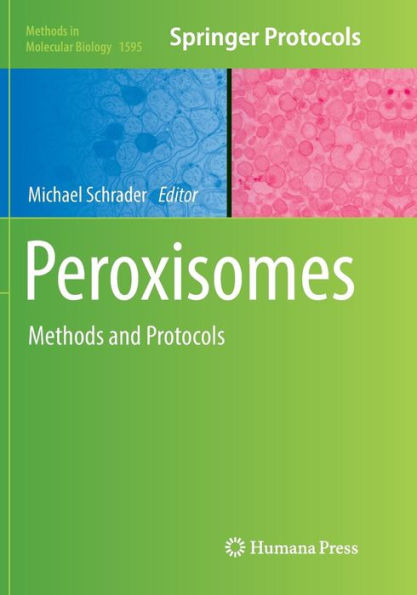This volume provides easily accessible and comprehensive collection of methods, techniques, and strategies to investigate the molecular and cellular biology of peroxisomes in different organisms. Chapters detail valuable instructions, guidelines and protocols for molecular cell biologists, biochemists and biomedical researchers with an interest in peroxisome biology. Chapters in Peroxisomes: Methods and Protocols illustrate the isolation of peroxisomes, investigation of properties of membrane proteins, protocols to investigate and manipulate peroxisomes in cellular systems, detection of peroxisomes, including immunofluorescence, cytochemistry, cryo-immuno electron microscopy, and live cell imaging approaches.
Authoritative and practical, Peroxisomes: Methods and Protocols aims to be useful for those already working on peroxisomes as well as for those who would like to start working on this fascinating organelle.
This volume provides easily accessible and comprehensive collection of methods, techniques, and strategies to investigate the molecular and cellular biology of peroxisomes in different organisms. Chapters detail valuable instructions, guidelines and protocols for molecular cell biologists, biochemists and biomedical researchers with an interest in peroxisome biology. Chapters in Peroxisomes: Methods and Protocols illustrate the isolation of peroxisomes, investigation of properties of membrane proteins, protocols to investigate and manipulate peroxisomes in cellular systems, detection of peroxisomes, including immunofluorescence, cytochemistry, cryo-immuno electron microscopy, and live cell imaging approaches.
Authoritative and practical, Peroxisomes: Methods and Protocols aims to be useful for those already working on peroxisomes as well as for those who would like to start working on this fascinating organelle.

Peroxisomes: Methods and Protocols
347
Peroxisomes: Methods and Protocols
347Paperback(Softcover reprint of the original 1st ed. 2017)

Product Details
| ISBN-13: | 9781493983445 |
|---|---|
| Publisher: | Springer New York |
| Publication date: | 07/20/2018 |
| Series: | Methods in Molecular Biology , #1595 |
| Edition description: | Softcover reprint of the original 1st ed. 2017 |
| Pages: | 347 |
| Product dimensions: | 7.01(w) x 10.00(h) x (d) |
